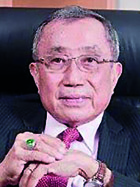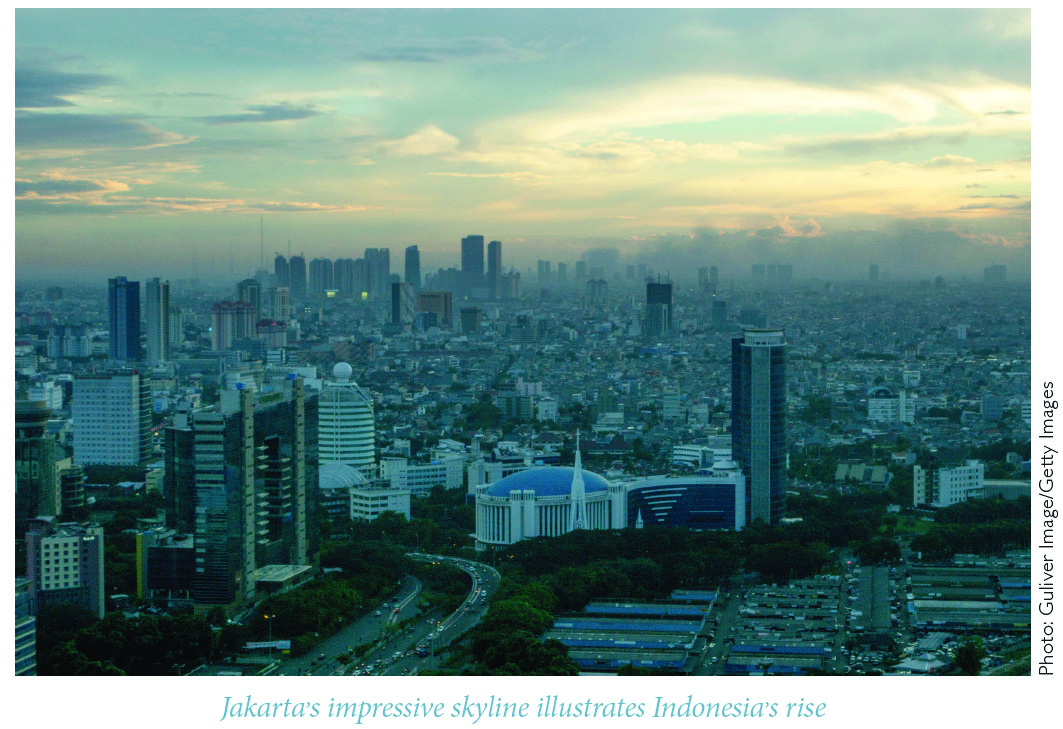 Jusuf Wanandi is co-founder of Indonesia’s Centre for Strategic and International Studies (CSIS), Vice Chairman of the Board of Trustees of the CSIS Foundation, President and Director of the publishing company of The Jakarta Post, and Chairman of the Board of the Prasetiya Mulya Business School.
Jusuf Wanandi is co-founder of Indonesia’s Centre for Strategic and International Studies (CSIS), Vice Chairman of the Board of Trustees of the CSIS Foundation, President and Director of the publishing company of The Jakarta Post, and Chairman of the Board of the Prasetiya Mulya Business School.
Since the end of the Cold War in 1991, East Asia has gone through dramatic changes. It first lived through a short era of one superpower reigning supreme, the United States. The demise of America’s chief nemesis, the Soviet Union, had paved the way for a unipolar moment—one that did not last long. The 2008 global financial crisis weakened the American economy so badly at a time when other powers, particularly China, were rising. This marked the beginning of a multipolar era in world politics.
The United States failed to take advantage of its position and construct a world order that would have been based on liberal democracy and economic capitalism. Having won the superpower contest, a jubilant America did little to create a system that could have sustained its position. There was just too much hubris.
China, in the meantime, was catching up fast. The changes of the last four decades have transformed the country, not only economically—although here it was nothing short of a miracle—but also politically, socially, and culturally.
This trend continues under the leadership of Chinese President Xi Jinping, who was reelected to lead the Chinese Communist Party in October 2017. He is now seen as having claimed his historical place alongside Mao Zedong and Deng Xiaoping. It is no wonder that Xi’s thoughts have been incorporated into the constitution. If Mao is the founder and unifier of China, and Deng is the father of China’s economic development, Xi is the “dream catcher” of China—someone who is transforming China into a powerful and prosperous nation with distinct Chinese characteristics that are consistent with Chinese traditional values, including Confucianism.
China is set to become a nation with a moderate per capita income level by 2020. By 2035 it should reach the level of a modern socialist country, with adequate strength in all fields. By 2049, the centenary of the People’s Republic of China, it should become a completely modern socialist state with its capabilities and power resonating globally.
China is also becoming more active in foreign policy, most particularly through regional organizations and initiatives like the Belt and Road Initiative (BRI), BRICS, and the Conference on Interaction and Confidence-Building in Asia (CICA), as well as through its cooperation with ASEAN. The latter is the driving force behind regional initiatives such as the ASEAN Regional Forum (ARF), the ASEAN Defense Ministers Meeting (ADMM), and the ADMM-Plus, as well as the East Asia Summit (EAS). Meanwhile, China is living up to its responsibility to defend and promote an open global economic order, the Paris Agreement on Climate Change, and various other multilateral agreements. On security, China’s growing military power should be used to help ensure peace and stability—not only regionally in East Asia, but also globally.

Within the next 30 years, China will become a powerful country in a new global environment. Beijing’s strategic vision is to build socialism with Chinese characteristics, and a nation that is moderate and prosperous in all fields—one that is actively pursuing modernization. To rely on domestic terminology, China will become a large modern socialist state in all its dimensions.
Another noteworthy development is the role that Donald Trump seeks for the United States, for he might continue to govern the country for a second full term. Trump is creating a new challenge for East Asia with his policy of solely putting America’s interests ahead of everything else, and by effectively withdrawing his country from its previously established role of global leadership.
During his extensive trip to East Asia in November 2017—with stops including China, Japan, South Korea, Vietnam, and the Philippines—Trump demonstrated a willingness to follow the advice of his aides to attend summits in Vietnam and the Philippines. But there is no guarantee that he will not return to his earlier stance as an American leader who is only concerned with himself and his people (particularly his political supporters). He may have temporarily adjusted his policies to better suit the reality on the ground, but when it comes to trade and economy, he remains single-mindedly a unilateralist. This was recently demonstrated on issues such as steel and aluminum tariffs, which are directed at China specifically.
For the East Asian economy and development, it is vital that we see positive growth and stability based on shared economic prosperity. The United States remains a powerful force, particularly in military terms, that still plays a major role in the region. There are clear and valid arguments as to why America must maintain its presence in the region and take part in maintaining the strategic balance of power. But with the publication of its new National Security Strategy, the official U.S. position has shifted: bilateral relations are now more confrontational, with China becoming the number one enemy, perceived as a revisionist power opposed to the United States.







